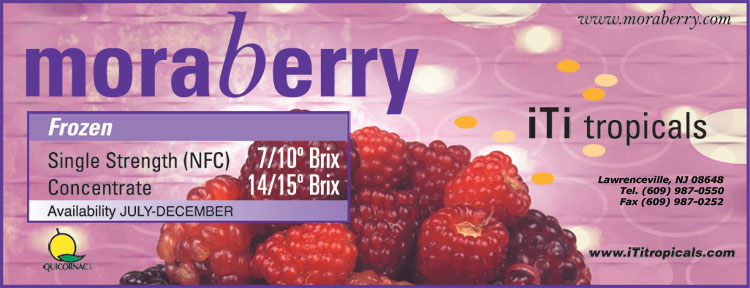Coconut craze expands across categories
From: BevIndustry.com May 14, 2012
By: Jennifer Zegler
The fictional personal ad in the song "Escape" famously seeks someone
who likes piña coladas. Although the search might have been difficult
for musician
Rupert Holmes in 1979, consumers today are fond of piña coladas as well
as additional beverages capitalizing on coconut. The number of products released globally with coconut as a primary ingredient have more than
doubled since 2005, according to the "Coconut Popularity and Use Soars"
report from Chicago-based Mintel.
released globally with coconut as a primary ingredient have more than
doubled since 2005, according to the "Coconut Popularity and Use Soars"
report from Chicago-based Mintel.
The market research firm's April 2011 report noted that the North
American market also has seen a significant surge in product releases
featuring coconut. Mintel data showed that the number of products
released with coconut as a primary ingredient increased from 5.8 percent
of the market in 2005 to 15.7 percent through April 2011 in North
America.
Globally, Mintel's report showed that non-alcohol beverages led
launches of products containing coconut as a primary ingredient. In
2010, the global non-alcohol beverage category reported a 25.5 percent
increase in new product releases featuring coconut, the report
highlighted.
Demand has increased for coconut cream and coconut water ingredients
recently, says Don Giampetro, vice president of iTi Tropicals Inc.,
Lawrenceville, N.J. The company offers coconut cream, which is derived
from coconut meat and typically contains 24 percent fat, he explains.
Traditionally popular for frozen novelties, requests for iTi Tropicals'
coconut cream have grown in the beverage industry as new coconut milk
products are released. Beverage-makers also are increasingly asking for
iTi Tropicals' single-strength and 60 brix concentrate coconut water
ingredients, Giampetro says.
The number of coconut water introductions doubled between 2009 and 2010
in the juice segment, Mintel's report noted. According to the research
firm's data, Brazil accounted for 43 percent of global coconut water
introductions in 2009, but just 16 percent in 2010. However, coconut
water still remains popular in Brazil where the beverage is positioned
as a refreshing alternative to bottled water, the report noted.
Accounting for 19 percent of global launches in 2010, the United States
reported twice as many launches of products that contain coconut water
compared to the previous year, according to Mintel. In addition, Canada,
Germany and the United Kingdom entered the category for the first time
in 2010, the report noted.
Mintel's Global New Product Database (GNPD) showed that between April
5, 2011, and April 5, 2012, 105 new beverages highlighted the use of
coconut. The products ran the gamut from coconut waters to spirits as
well as new products mixing coconut water with tea, aloe and probiotics,
according to a search on GNPD. Of the 105 products that launched
highlighting coconut, 31 used coconut water or coconut juice in their
formulations, GNPD data shows.
Giampetro of iTi Tropicals predicts that the use of coconut water as an ingredient will increase.
"The future that we see is the use of coconut water as an ingredient
for formulating lower-calorie high juice content beverages," he
explains. "We are starting to see more products coming out promoting
this. Sports drinks and electrolyte beverages are also appearing more
and more in the market."
As an ingredient supplier, iTi Tropicals has been an importer of
tropical and exotic fruits for almost 25 years, Giampetro says. It
maintains long-standing relationships with iTi Tropicals' processors,
which are annually audited by third-party companies. A rigid approval
process also exists for new processors, he notes. In business for nearly
a quarter century, iTi Tropicals is careful to balance price with
quality for its imported ingredients, he says.
"The key focus is importing the most cost-effective product at the
highest quality and consistency," Giampetro says. "We have our own
internal [research and development] and [quality control] departments
which work closely with processors around the world."
Source is important, as he cautions that if coconut demand continues to
rise in the next five to 10 years, the continued qualification of
high-quality and consistent sources of supply will be a challenge.
Mintel's 2011 "Coconut Popularity and Use Soars" report also predicted
the growth of coconut's use in categories beyond coconut water. The
report's author, Craig Thayer, global food and drink trends analyst for
Mintel, noted the future prospects for the ingredient.
"If we look to broad consumer trends, people tend to believe natural
products are healthier products," Thayer wrote. "This sentiment is
likely to continue, making a favorable climate for coconut. Coconut has,
by and large, a healthy halo. It is also still connected to freshness
and refreshment, allowing for innovations that seek to promote healthy,
fresh indulgence - we've seen this in sports drinks and its use in
spirits also attempts to evoke feelings of relaxation."
Spirits infused with coconut, such as Hamilton, Bermuda-based Bacardi
Ltd.'s Bacardi Rock Coconut rum and Ciroc Coconut vodka from Diageo,
Norwalk, Conn., have been part of the trend of spirits switching from
heavily creamed coconut drinks to fresher and lighter alternatives, the
Mintel report highlighted.
Thus, perhaps an updated version of the personal ad featured in the
song "Escape" might seek someone who likes low-calorie piña coladas -
and getting caught in the rain. BI
Ingredient supplier iTi Tropicals predicts that coconut water will
increasingly be used for lower-calorie formulations, such as the
150-calorie Odwalla Smoothie Refreshers from the Half Moon Bay,
Calif.-based subsidiary of The Coca-Cola Co.
| 


 released globally with coconut as a primary ingredient have more than
doubled since 2005, according to the "Coconut Popularity and Use Soars"
report from Chicago-based Mintel.
released globally with coconut as a primary ingredient have more than
doubled since 2005, according to the "Coconut Popularity and Use Soars"
report from Chicago-based Mintel.
